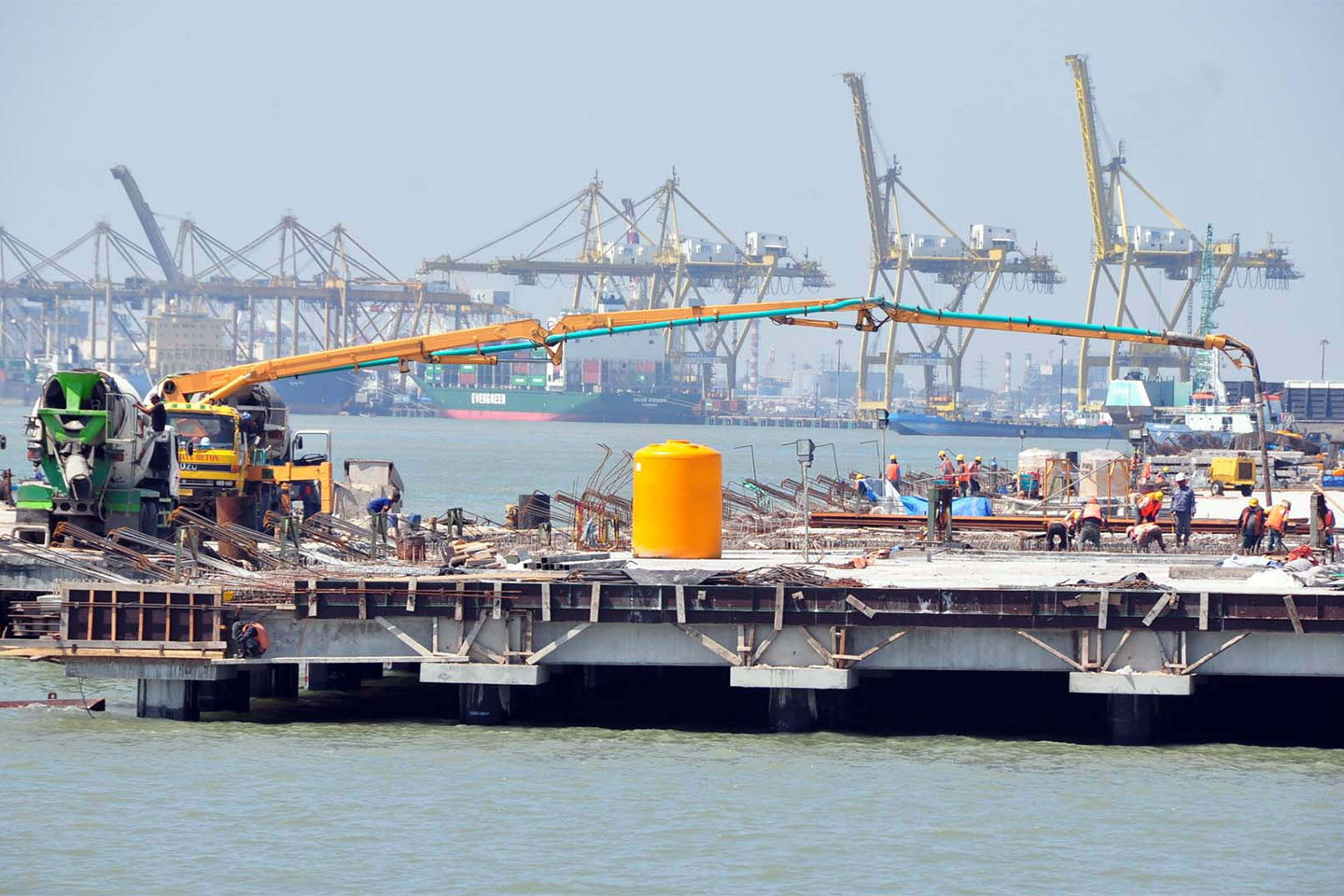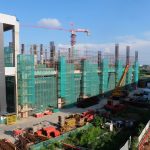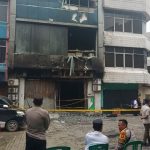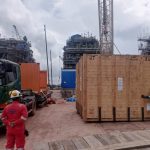Liga Asuransi – Dear readers, how are you? Let’s continue our discussion on risk management and insurance. This time we will be discussing the wet risks.
Literally, wet risk translates as wet work. This relates to construction work where there is dry work and wet work.
Because of such a high risk, many underwriters from insurance companies are somewhat reluctant when offered to cover the projects that have a wet element of risk.
As a senior insurance broker, I would like to discuss this in detail. If you are interested, please share it with your colleagues so that they also understand like you.
In our experience, if we can explain the actual condition of the project, starting from the design, planning consultants, field conditions, parties involved, the use of tools, and experience from the contractor then the insurance company will be interested.
Definition of Wet Risk
According to legal experts, the definition of wet risk is as follows:
Wet Risk is any occupation in which more than fifteen (15) percent of its value is in, below, or above the water or under any tidal watermark.
The term should include contracts for the construction of docks, marinas, causeways, breakwaters, piers, dry docks, and offshore pipelines when directly connected to facilities on the coast and the development of canals. Wet Risk Contracts do not include Offshore Contracts.
The Wet risk insurance industry is also grouped into “marine works” which include the following jobs:
- breakwater construction (offshore)
- dock (maritime) – impounded and dry docks
- harbor
- jetty
- pier
- wharf
Why are Wet Risks scary for insurers?
It is necessary to know that construction work in the water poses a lot of difficulties especially if it is located quite deep places during construction. To avoid risks, the focus is on creating a dry and water-free work environment to work in such a way that structural stability is not disturbed.
The technique of making concrete underwater has great challenges. This relates to the work of transport, compaction, quality control, finishing and accuracy must all be done meticulously and successfully in different environments, and it is often difficult.
Please be aware that currently the techniques that are widely used for wet risks work are Caissons and cofferdams.
Caisson is a retainer, a waterproof structure for example, for working on the foundations of docks, bridges, for the construction of concrete dams, or for the construction of ship repair yards.
Caissons are introduced into the water to remove water and semi-fluid materials during the foundation excavation process, which subsequently become an integral part of the substructure.
Cofferdams are enclosures built within the water environment allowing water to be displaced with the aim of creating a dry working environment.
This technique is generally used for construction and repair work on oil platforms, and bridge and dam work.
A cofferdam is usually a welded steel structure that is temporary in nature, dismantled after the work is completed. Its components consist of sheet piles, welsh, and cross braces.
Understanding the caisson Method
The way the caisson method works is by moving the load exerted by the building structure to a solid and deeper layer.
Caisson’s foundation is most often used for bridge foundations, but it is sometimes used in the construction of buildings.
Caissons are usually made of reinforced concrete with various forms of cross-section, depending on the need. It is built with the aim that water could be pumped out and keep the working environment dry.
The size of the outer wall of the caisson is large enough and should have a thickness of at least 1 meter, and the caissons should have rigid walls horizontally and vertically.
Understanding how Cofferdam works
A cofferdam is a temporary structure designed to keep water and/or soil out of excavations on which docks, bridges, or other structures are built.
With the cofferdam construction work can be done underwater, a cofferdam was built to provide the workers with a dry working environment.
Cofferdams can be made by installing a sheet around the designated area or by immersing prefabricated structures made of concrete, steel, or a combination of concrete and steel.
Now the cofferdam is also available in the form of a fabricated steel structure that is lifted to the spot to the work site by an electric-powered crane barge, or a precast concrete structure floated into place and installed at the bottom.
Technical Placement of Underwater Concrete Pier
The technical requirements of underwater plating include placement methods and techniques, order of placement, the layout of equipment placement, finishing, and concrete protection.
Concrete placement planning should include relevant subject details as well as construction logistics (the relationship between various concrete operations and their relationship with other construction operations)
Understanding Wet risks
To understand the risks faced by Wet Risk work, here let’s look at the risks one by one:
Natural Disasters
Weather conditions can change rapidly, and it can affect construction work. Most wet risk work whether at sea, river, or lake must be done using ships such as dredges, towing boats, and tugboats.
If suddenly bad weather comes, all construction ships must be towed to shelters, and work is forced to stop. This can lead to delays in critical activities, so bad weather will be one of the main risks faced by contractors.
Accidents for workers
A diver in a project in a sea, river, or lake is very important since only a diver can describe the situation underwater. As a result, their duties are so dangerous that the cost of insurance is very high.
Design
Perfect communication between the designer and the contractor greatly influences the success in the construction of projects in particular Wet Risk.
The delay in providing information to the contractor is the most controversial and interesting mistake to note that the larger the scale of the project, the more likely the construction delay occurs.
In addition, engineers also instruct many different instructions the contractor. This affects the planned construction progress of the pre-contract stage.
Construction Work
Large projects including wet risk will usually involve subcontractors in almost all parts of the project.
It is also necessary to know that the subcontracting system often causes many serious problems that lead to over-time of the project such as insufficient labor supply.
This is because subcontractors usually allocate their human resources to different projects to maximize their profits. since the work has been handed over to them, the prime contractor has no authority to influence the policies of the subcontractors.
In addition, there is a possibility that the quality of manpower placed in wet risks projects is inadequate, causing accidents.
What are the risks of wet risks?
Although contractors and subcontractors are trying to reduce the level of risk, there is still the potential for risk.
The following are the factors that cause the risk:
- Late information or instructions presented by engineers.
- Underwater conditions differ from tender assumptions.
- Very bad weather conditions.
- Lack of technical experience.
- Unavailability of materials, machinery, or labor.
Almost all projects find the underwater situation different from the assumption of tender documents. Before the project tender, the contractor is supposed to predict the underwater conditions around the area.
The occurrence of physical risks, for example, damage to equipment and labor injuries, is mainly caused by the carelessness of workers, which can actually be controlled by training and development.
Risk mitigation techniques
Here are some risk mitigation techniques that need to be done:
- Coordinate closely with other parties
- Provide strict supervision to subordinates
- Refers to previous experience
- Adopt quantitative risk analysis
- Adopt subjective judgments
- Collecting the latest information
- Transfer or share risks with others
- Planning alternative methods
- Provide appropriate training for workers
Risk improvement recommendations
Some suggested recommendations to reduce possible risks and improve the situation if risks are encountered for risk projects in the sea, river, or lake:
- Hiring experienced employees for the project
- To communicate with other project parties through regular meetings to ensure the project is running well
- To conduct a risk assessment at the initial project stage by providing comprehensive methods for solving different risk situations
- To provide preliminary planning at the initial project stage in checking the possible risks that may be encountered.
- To provide training and development programs to employees.
- To collect up-to-date information before the project starts.
Things that an Underwriter needs to consider
For each potential risk that can occur, the underwriter needs to consider the following:
Natural Hazards and Fire Hazards
Construction work is generally related to natural earth conditions, such as deep valleys, rivers, lakes, and even parts of the sea, or those that have geological or topographical conditions that demand special attention.
By their nature, buildings under construction are very vulnerable to various natural hazards. For example, the construction of bridges under construction can be affected by floods, earthquakes, hurricanes, landslides, and even lightning.
As we already know from the construction of roads, the construction work of bridges with the most important natural hazards is related to the frequency with which floods occur.
Lightning
Perhaps the risk of lightning is not the main risk. However, new materials, such as carbon fiber, and copper that can be used in cables for construction, require special measures that take into account the properties of the material. Adequate Lightning protection installations installed in any case should be implemented.
Fire
Wooden formwork and temporary work are still widely used in building construction. This indicates a significant risk of fire.
Particular attention should be paid when welding or cutting for steel reinforcement is carried out. Because the steel reinforcement that is usually very dense and hot is almost impossible to extinguish immediately unless there is adequate standby fire extinguishing equipment.
Wrong Design, Material, and Workmanship
The shape of buildings can vary from simple structures to some of the most advanced structures in civil engineering. Therefore, the risks involved in the design will also be enormous.
The design of the building must meet the main requirements:
- The overall budget is available
- Durability and life span of the building
- Architectural and aesthetic functions.
- Location geometry
- Suitability for its use e.g., for vehicle bridges, railway bridges, docks, dams etc.
- Soil and sea/river/lake conditions
- Building Construction is limited by:
- Time available to complete the structure
This is the role of the designer to find the optimal solution, considering all of the above.
Aspects of Third-Party Liability
Sometimes the buildings are under construction across the river channel. For such projects, the request for expansion of coverage to include TPL coverage is very common, and the amount normally required per event tends to be moderate to large, i.e., between US$5 Million to S 20 million.
Contractors Plant and Equipment (CPE)
Depending on the nature of the construction work, a wide range of mobile machines and stationary mills are used. Soil and rock shifting equipment, pole and drill drive machines, stationary and mobile cranes, concrete mixers, scaffolding, tools, temporary houses, offices, warehouses, and workshops, etc.
Why for Wet Risk construction insurance you should use the services of an Insurance Broker?
The construction of wet risks is not an easy and high-risk job. Not many insurance companies are willing to provide insurance coverage.
It requires extensive insurance knowledge and experience in engineering insurance and knowledge of risk management so that insurance coverage is maximized.
The best way to arrange insurance for the construction of wet risks is to always use the services of an official insurance brokerage company registered with the Financial Services Authority (OJK).
Insurance brokers design insurance programs that best suit your project’s risk conditions. Find an insurance company that can cover the risk with competitive premium rates.
An important benefit of using the services of an insurance brokerage firm is that you will get help in resolving claims for free. The insurance broker also acts as your advocate for the settlement of insurance claims.
One of the insurance brokers companies with extensive experience in the field of construction insurance in Indonesia is L&G Insurance Broker.
For all your project insurance needs, please contact L&G now!
Sources:
- https://multipilarenergi.net/2021/04/20/apakah-wet-risk-menakutkan-asuransire/
- https://www.lawinsider.com/dictionary/wet-risks
—
Looking for Insurance Products? Don’t Waste Your Time and Contact Us Right Now
L&G HOTLINE 24 HOURS: 0811-8507-773 (Call – Whatsapp – SMS)
website: lngrisk.co.id
E-mail: customer.support@lngrisk.co.id
—

















